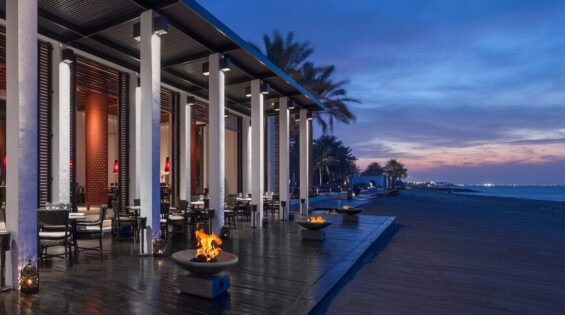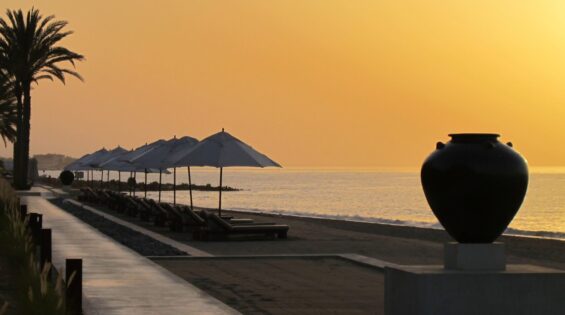Landing Mackerel in Muscat
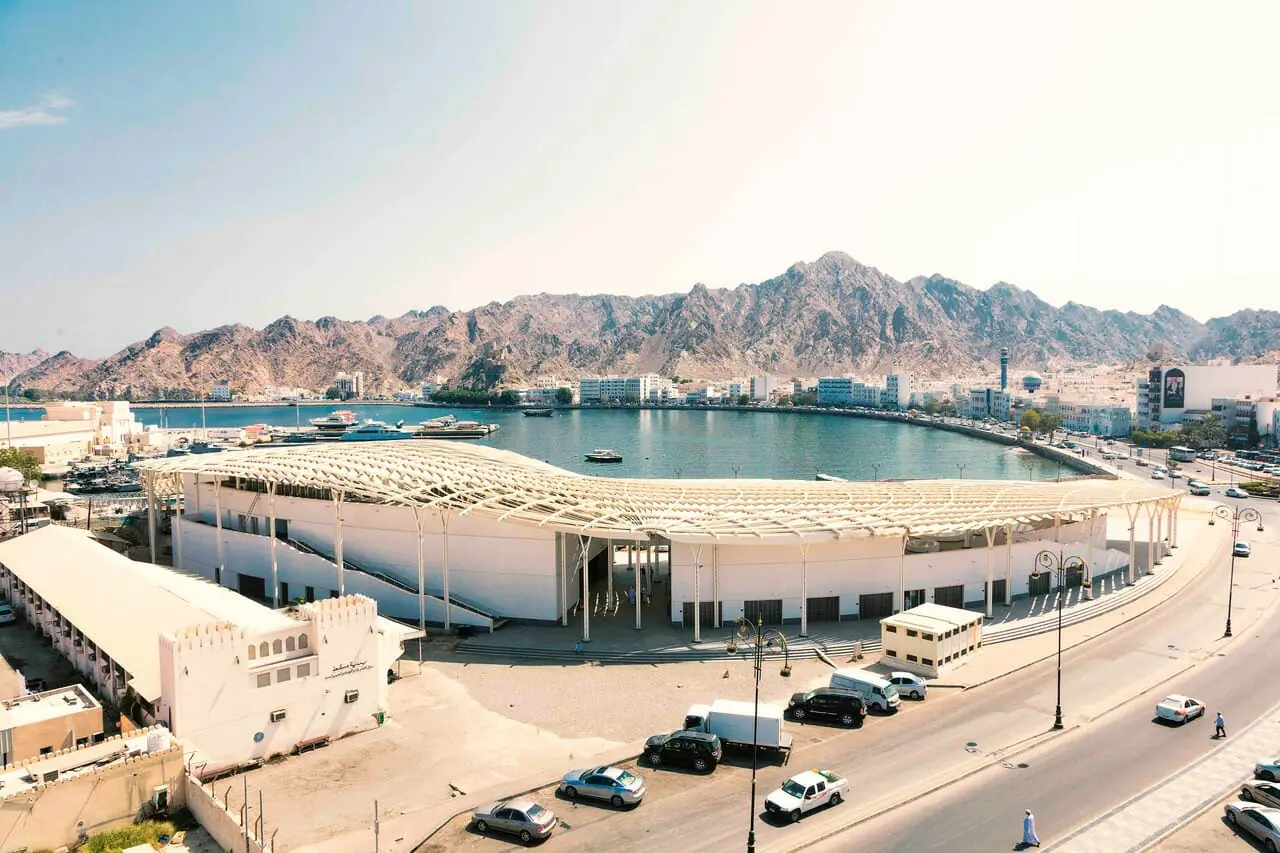
Muscat may be one of the less frenetic capitals in the Muslim world, but the city rarely lacks for colour – even in the usually somnolescent witching hours of the day.
In fact, the dawn is barely lighting the ocean off Muttrah corniche when my morning stroll to Oman’s biggest seafood market is punctured by violent cries.
I look, at first in vain, for the source of all that racket. In just a few hours, Muttrah’s main souq – one of the oldest and most atmospheric marketplaces on the Arabian Peninsula – will be a hive of activity. For now, though a single stallholder is half-heartedly arranging his textiles on the shaded pavements in the famous old enclave, an ancient port that was once the centre of commerce in Oman before the discovery of oil.
It’s a different story down by the water’s edge where a ruckus is breaking out on one of the boats roped to the walls of Muscat Harbour.
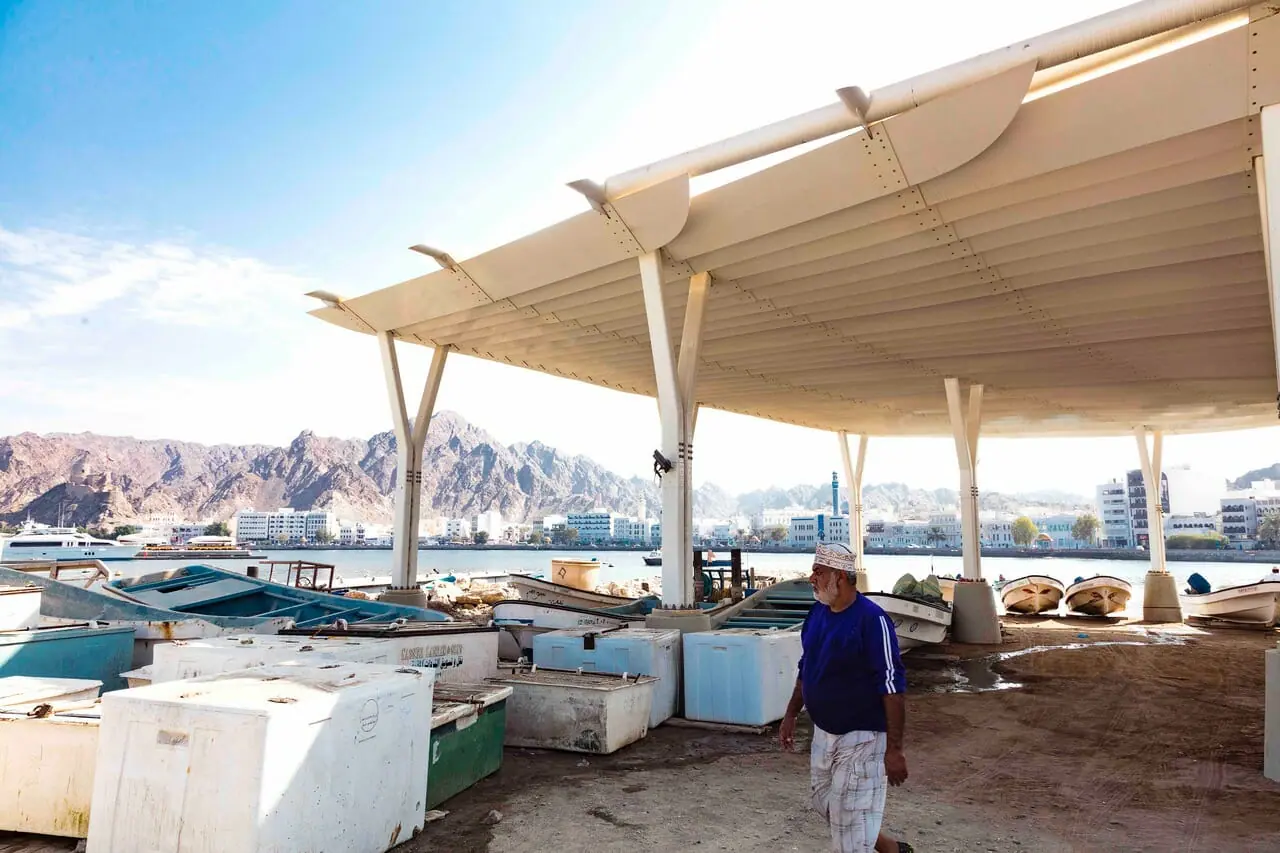 At the same time, the fish market is emblematic of a brand new day in Muscat, it serves as the functional hub of thriving seafood industry.
At the same time, the fish market is emblematic of a brand new day in Muscat, it serves as the functional hub of thriving seafood industry.
Shouts fill the still, salty morning air as fishermen rush to the scene of the struggle. Some watch in silence as the violence unfolds. Others offer vocal encouragement to the protagonists.
The conflict though is not being played out between men. In the red corner is a net bulging with mackerel making a final desperate play for the depths of the sea. In the blue corner, the men charged with bringing their catch in. The fishermen are well ahead on points already with the net already safely in the vessel. Even so, the powerful motion of the fish means that additional heft is required to shift the heaving sack safely from boat to land.
I observe this push and pull between man and marine life alongside Rashid Al Riyami, a 71-year-old fisherman who has agreed to show me round the city’s spanking new 4000sqm fish market.
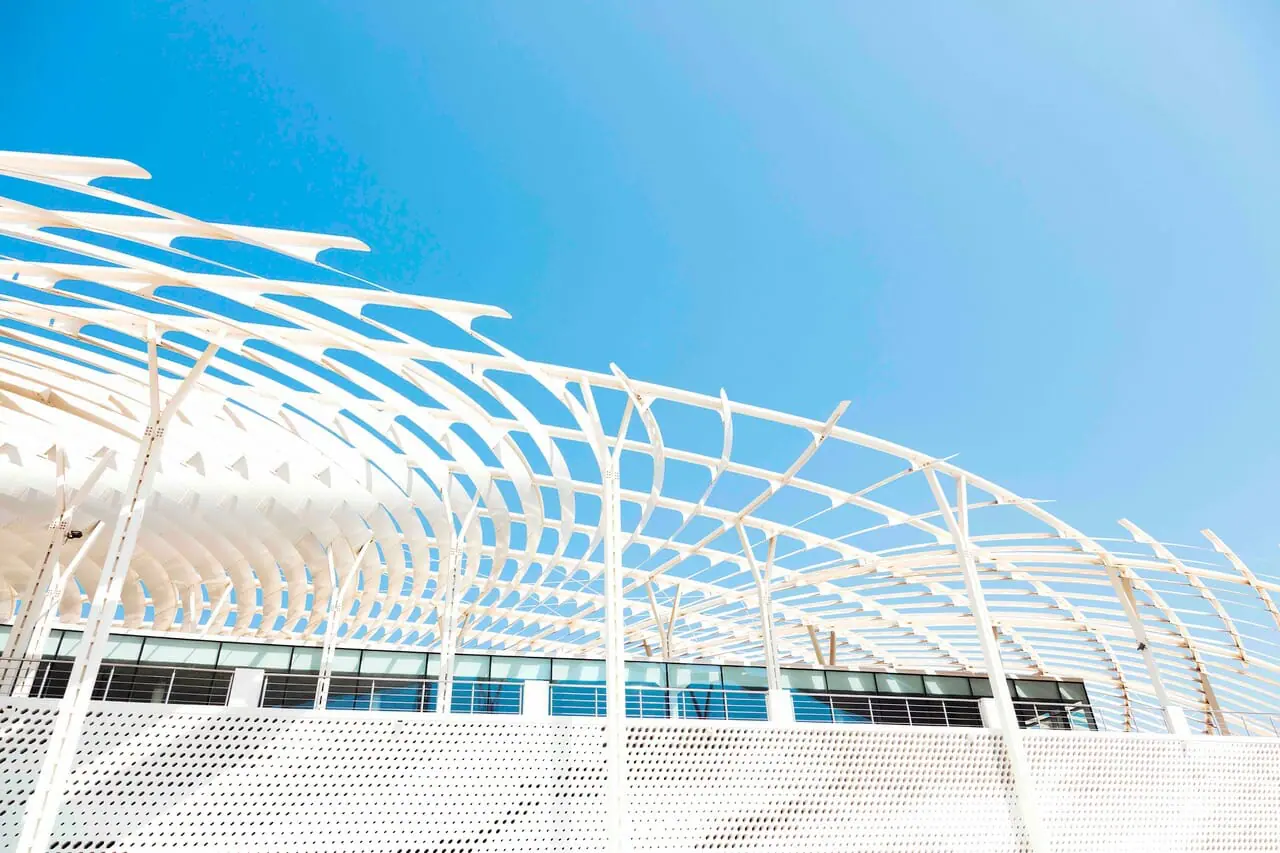 Playing with light and shadow were intrinsic to the design of the new fish market.
Playing with light and shadow were intrinsic to the design of the new fish market.
As you might expect from a guy who has spent most of his life earning a living from the rich marine fruits harvested from the Gulf of Oman, Rashid knows Muttrah like the back of one of his heavily calloused hands.
I can’t imagine a better person to offer insight into Oman’s inexorable link with the ocean: an unshakeable bond forged via strong seafaring traditions as well as the remarkable biodiversity and abundance of seafood found along the nation’s 3,165-kilometre coastline.
“When you consider how much ocean we have access to here, it would be strange if seafood didn’t play such a central role in the Omani diet,” chuckles Rashid as he leads me from the harbour into the main fish market.
Muscat has seen many changes in recent years. And the new market is one of the most spectacular manifestations of this evolution. Designed by Norwegian architecture practice Snohetta, the modernist canopies and angular walls of the building are the epitome of clean Scandi design. Inside, though, on the market floor an earthy Omani spirit keeps the place grounded.
As I move down the aisles, I see blocks laden with fresh kingfish, squid, bream and snapper. Giant tanks contain lobster, prawn, squid and baby shark. Vendors, meanwhile, skilfully hew slices from mammoth tuna as Omani men – resplendent in their spotless white dishdasha and colourful kumma caps – indulge in some good-natured haggling.
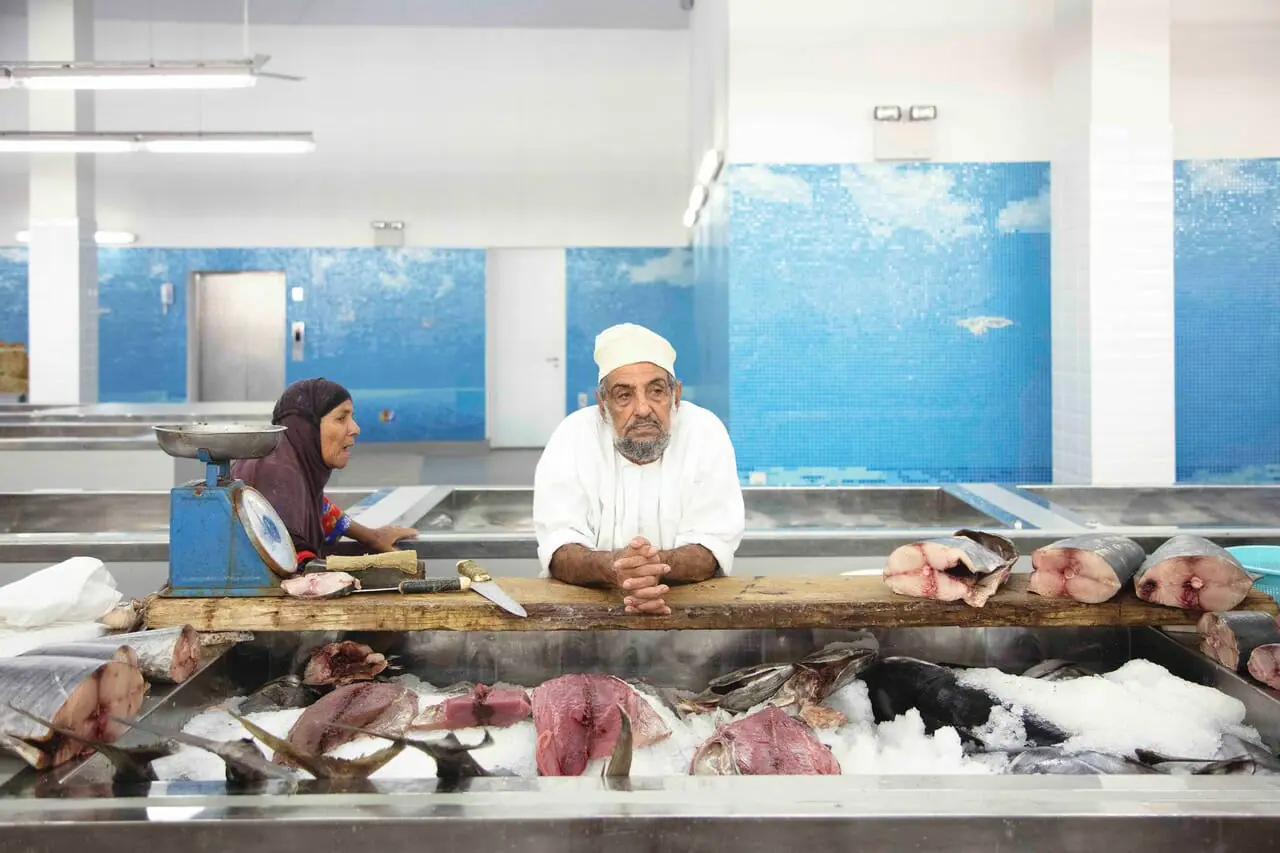 More than 100 fish sellers and cutters compete for business and the lenses of visitors’ cameras.
More than 100 fish sellers and cutters compete for business and the lenses of visitors’ cameras.
Better refrigeration and storage at the new facility have toned down the fish market experience. There’s little in the way of blood and gore on the spotless floors, while the presence of coffee shops and a fresh market contribute to a more family-oriented atmosphere. Nevertheless, the sheer variety of marine life and the combined energy of buyers and vendors make for an excursion that is rarely less than visceral.
“Fisheries are the second largest resource in Oman,”
says Rashid as we make our way to the market’s rooftop café to take in the morning air.
“Before the discovery of oil in the 1960s, Omanis depended on agriculture and fishing. Therefore, fish and seafood remain a huge part of the local diet. Truly we are very lucky that nature has blessed us with such a variety of seafood.” I too get a number of opportunities to reflect on this stroke of gastronomic good fortune over the course of my next couple of days in Oman.
At Bait Al Luban, a delightful restaurant housed in a renovated khan (guesthouse) in Muttrah, I savour a crash course in Omani cuisine – a subtle melange of flavours, spices and cooking styles that draws on Indian, Persian and African influences.
Seafood is the star attraction in dishes such as samak maqli (snapper marinated with lemon, garlic and chilli and fried whole) and saloonat rubyan(Omani prawns in a coconut curry base). I manage to tick off several other memorable seafood-focused dining experiences during my stay.
At a bare bones venue near Muttrah souq, I sample a traditional Omani fish soup made with tuna, garlic, ginger, cilantro, tomato and lime juice. Rashid, meanwhile, is kind enough to invite me into his family home to watch his wife prepare a homely stew flavoured with malleh (Omani preserved fish).
A throwback to the days before refrigeration when the only way to keep fish in the harsh Arabian climate was to preserve it, malleh is flavoured with thyme and chili, a combination that imparts extraordinarily deep umami tones on even the humblest creation.
The pinnacle of my pescatarian odyssey though comes at The Chedi Muscat where a sumptuous seafood banquet under the stars at The Beach restaurant makes for a fitting finale to my time in Oman. Anil Fernandes, the head chef at The Beach, hails from Mangalore in India’s Karnataka state, a coastal city that is famed for its way with seafood.
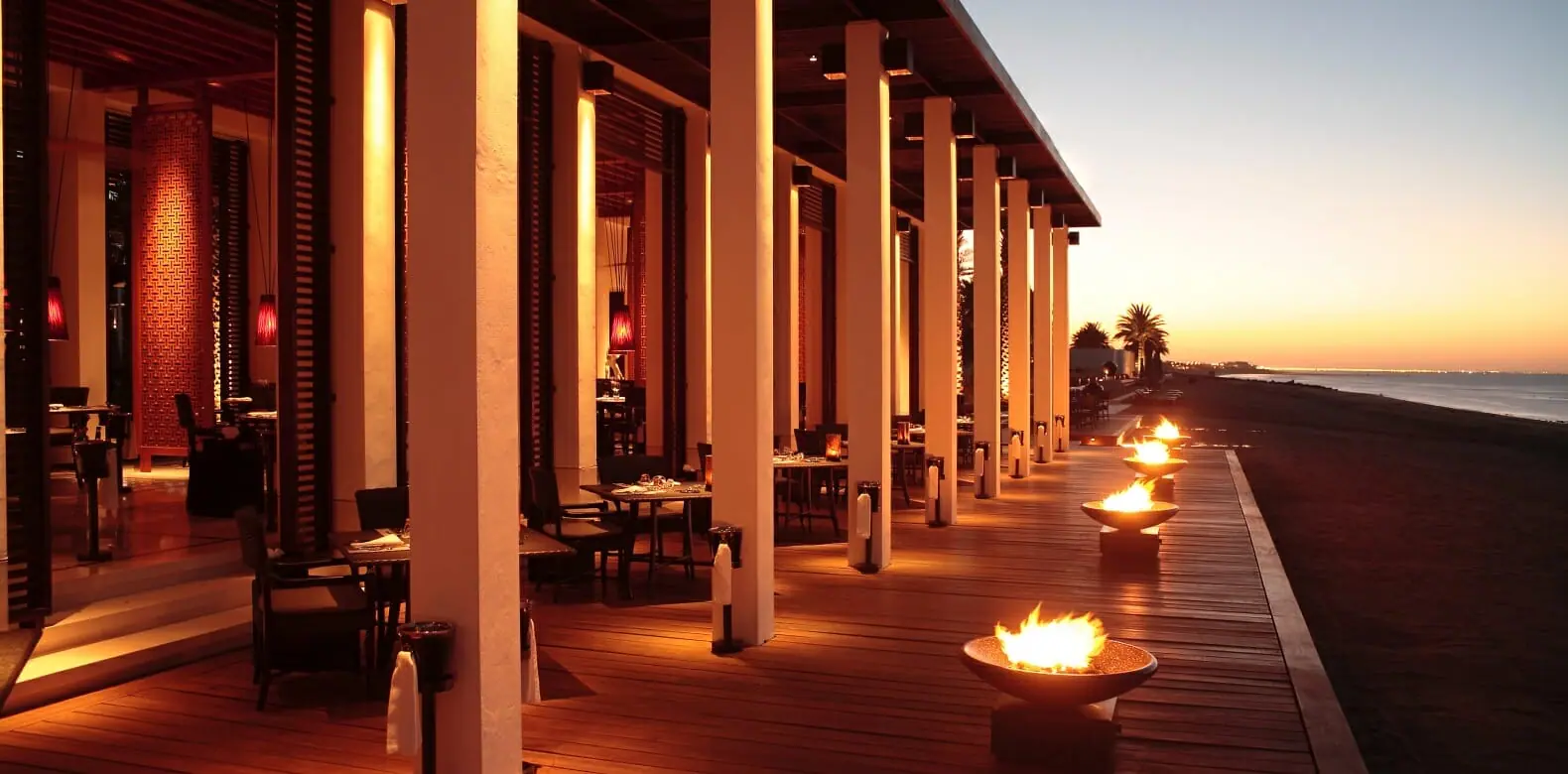 The Beach Restaurant at The Chedi Muscat serves dinner nightly between 7 and 10:30 on the Gulf of Oman.
The Beach Restaurant at The Chedi Muscat serves dinner nightly between 7 and 10:30 on the Gulf of Oman.
There’s little in the way of complex spice combinations at the Beach however. Instead, Fernandes prefers to let the bounty of seafood – brought in fresh from Muttrah market each day — speak for itself.
“We keep things very simple here,” he tells me, as he presents the restaurant’s signature Omani seafood platter – a dizzying array of perfectly grilled and seasoned fish and crustaceans. “There’s no point in us overwhelming the intrinsic flavours of the seafood. We prepare it carefully and let things take their course from there.”
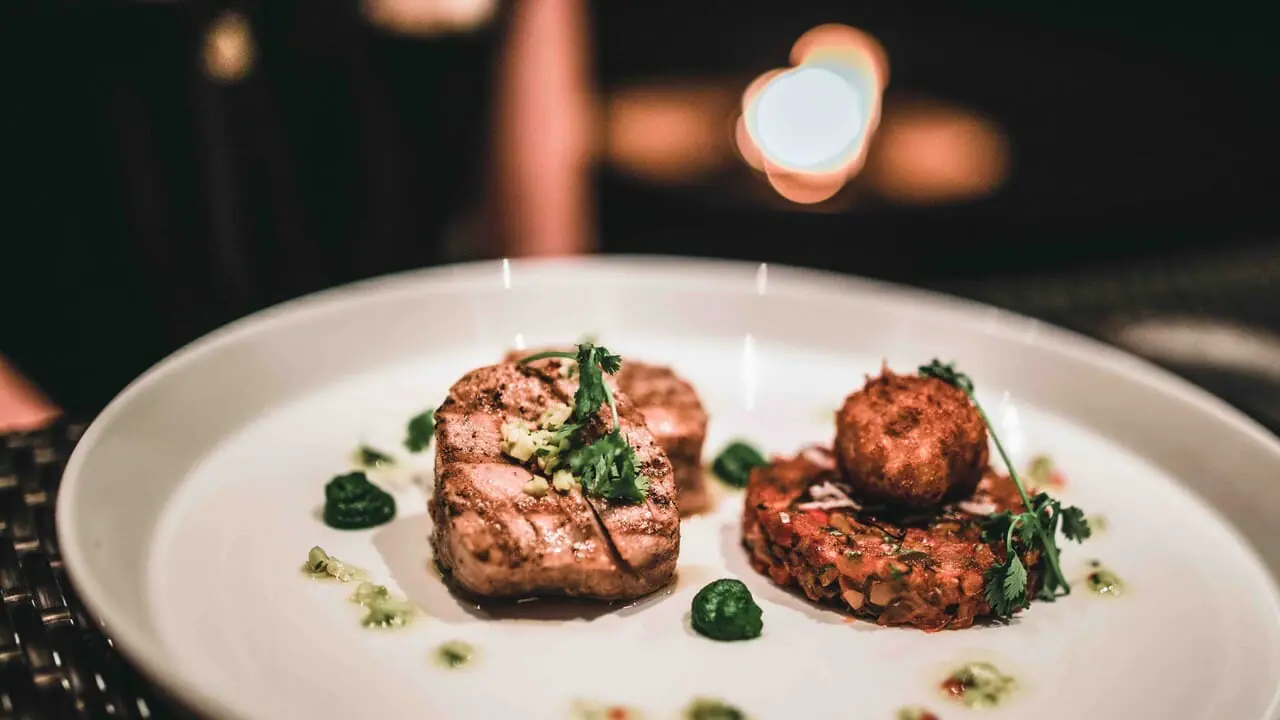 The beachfront dining at The Chedi includes grilled tuna with ratatouille, spinach emulsion and edamame pithiviers. The cured ocean trout is prepared with scented fennel avocado, beetroot, zucchini, crème fraîche and avruga caviar.
The beachfront dining at The Chedi includes grilled tuna with ratatouille, spinach emulsion and edamame pithiviers. The cured ocean trout is prepared with scented fennel avocado, beetroot, zucchini, crème fraîche and avruga caviar.
As I tuck into sweet lobster and the delicate flesh of local species like sharri and hamour, the soft beach sand massaging the inside of my toes, I reflect on the skirmish by the harbour. Here, below the stars, all is quiet. It would be all too easy to discount the eventful process of getting this feast from ocean to plate. Having witnessed the effort expended in bringing in a catch, I have an even deeper appreciation of what I’m eating. It’s is a privilege that someone has struggled for.
Photo Credits: Firas Al Raisi, Luminosity Productions and The Chedi Muscat
Text by Duncan Forgan for GHM Journeys.
Featured image: Built between 2009 and 2017, the new 4,000-square-metre Muttrah Fish Market curves with the corniche running around the bay.
First published on 12 March 2019.

![CMU The Chedi Pool Blog Post[]](https://www.ghmhotels.com/wp-content/uploads/CMU-The-Chedi-Pool-Blog-Post76-565x315.jpg)
